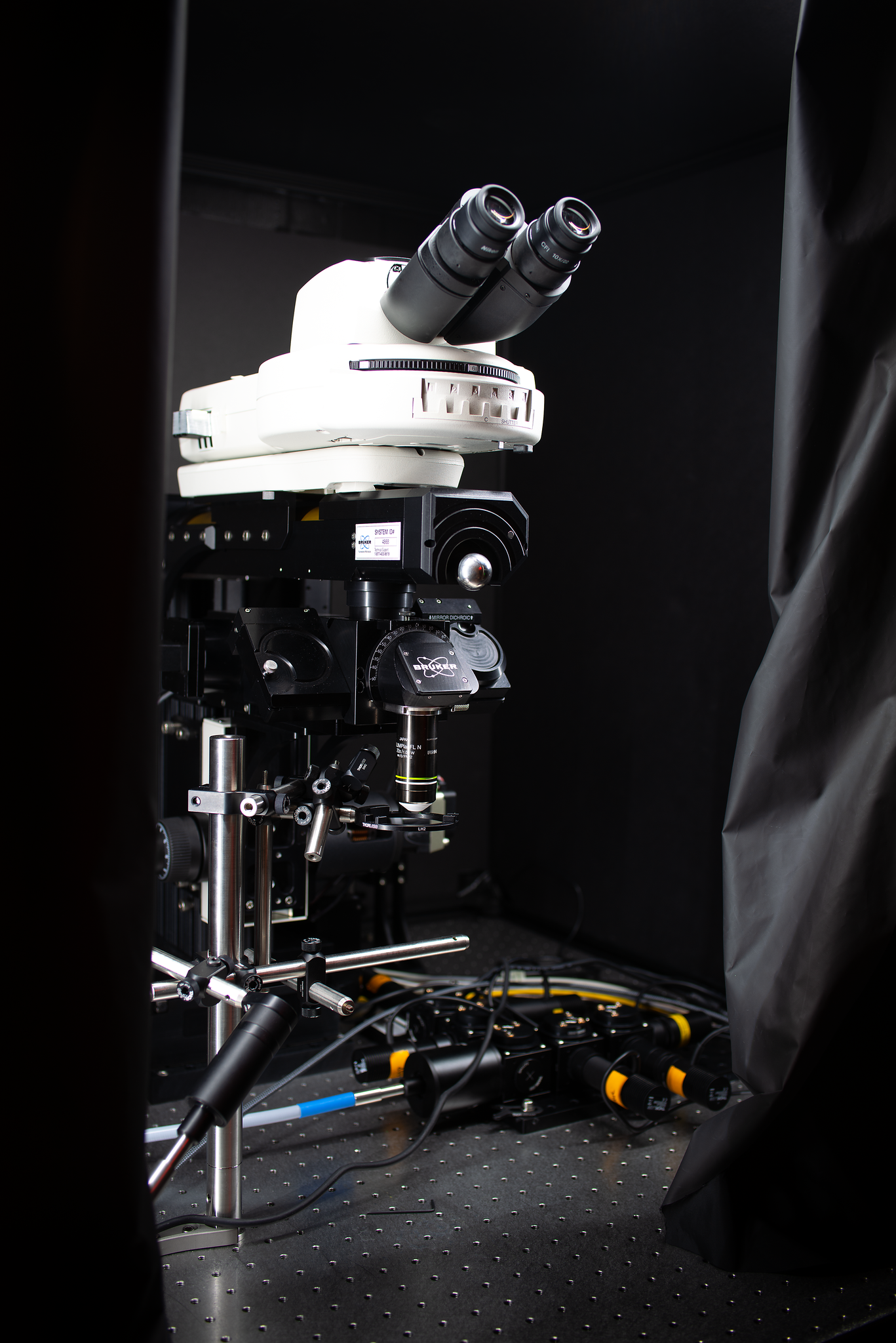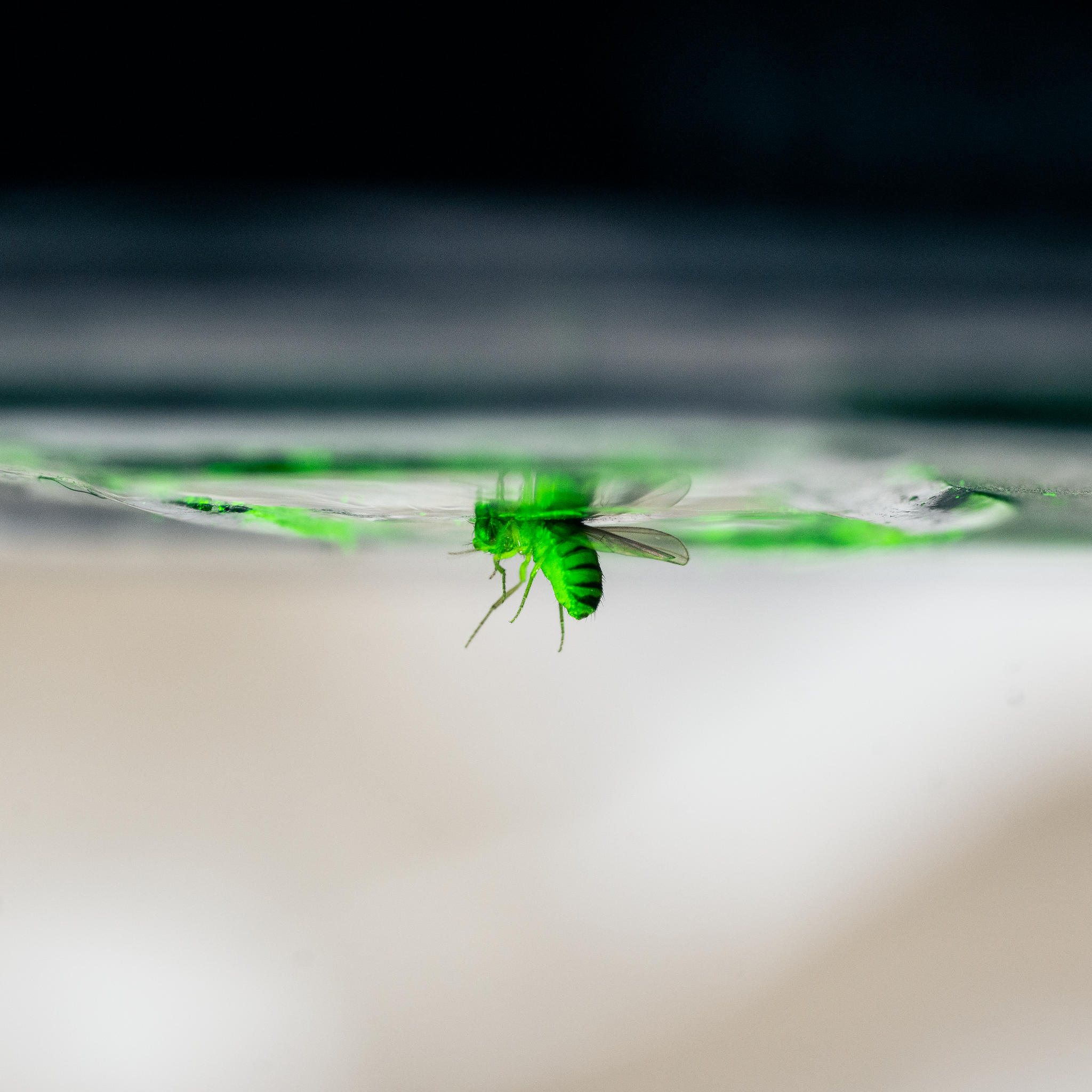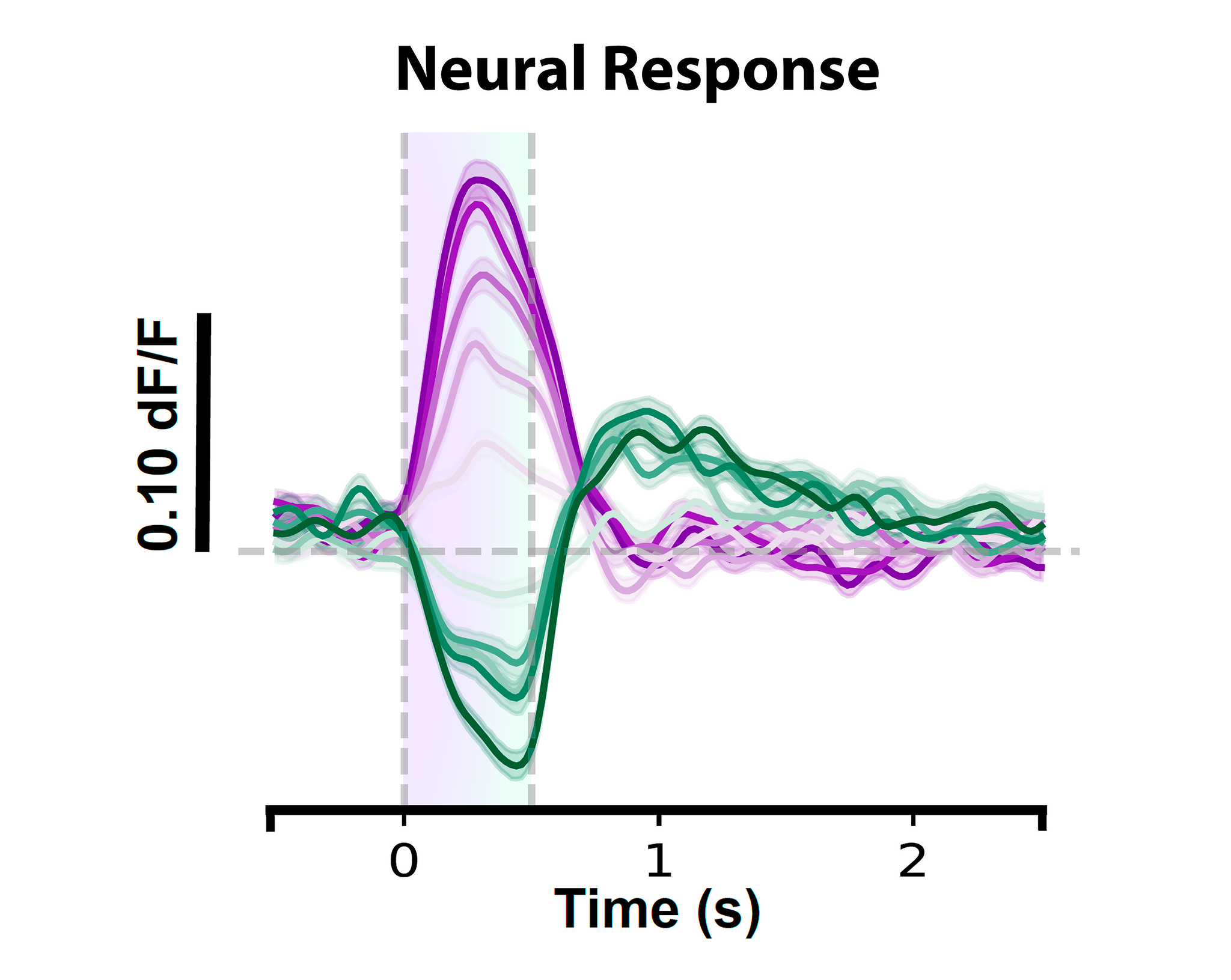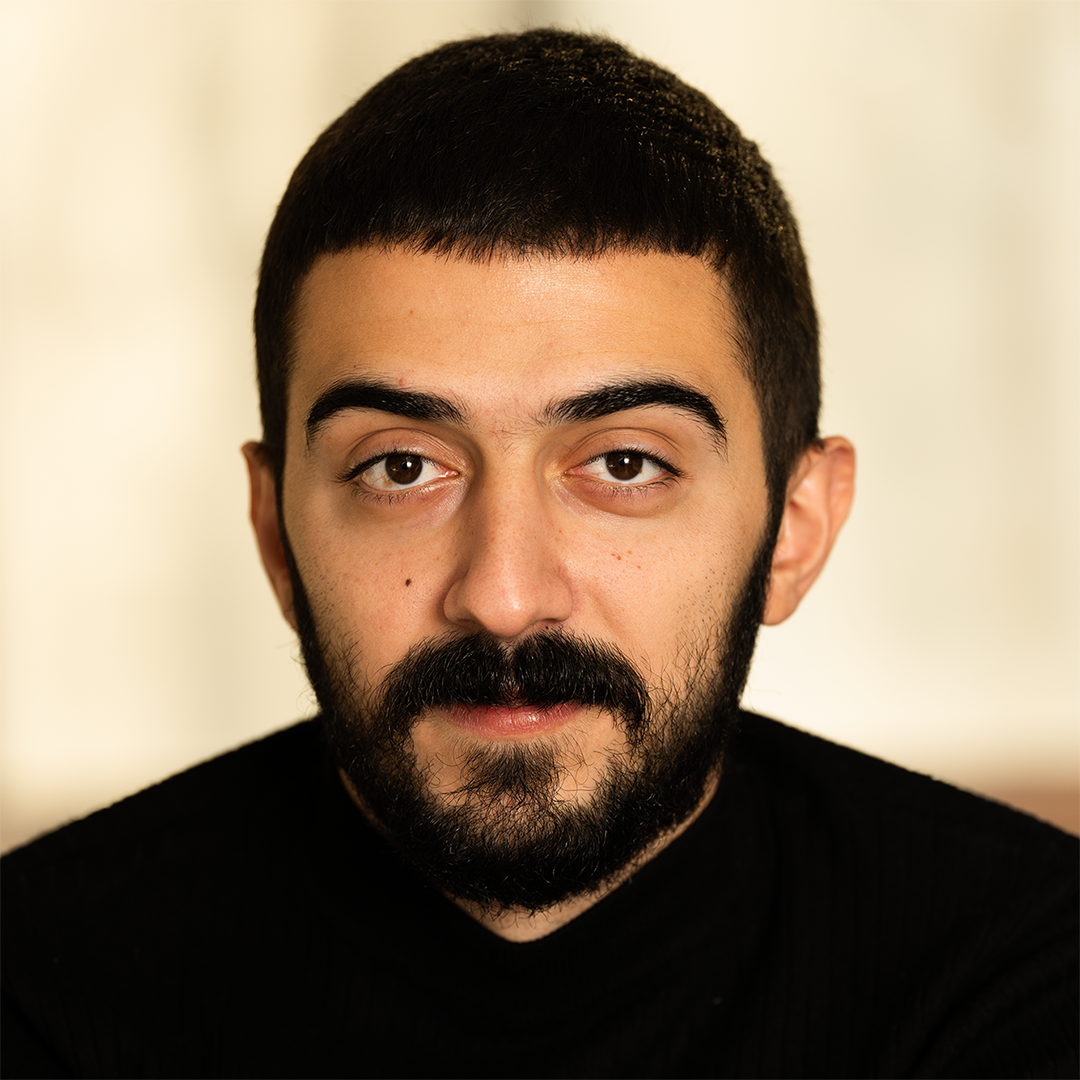Sharon Su wants to know how fruit flies find their way in the world using light. So this graduate student studies how the insects navigate using different properties of skylight, including polarization that human eyes can’t see. Su, a nonbinary musician from Oakland who builds their own analog audio synthesizers, uses a microscope to monitor the neural activity in brain regions thought to be important for navigation. They create theoretical models to explain the activity of special navigational cells called E-PG neurons. Their research in the Behnia lab focuses on how the brain integrates information from multiple visual features to parse the world. #sciportraits

Su in the lab with trays of fruit flies

A two-photon microscope for imaging fly neurons

A fly under the microscope presented with a color stimulus

Rayleigh scattering, demonstrated in a gel (left) and giving the sky its blue color (right), is reponsible for celestial cues flies use to navigate.

Experimental dataset showing neurons responding to change in chromatic contrast, a skylight cue flies use to navigate

Su


